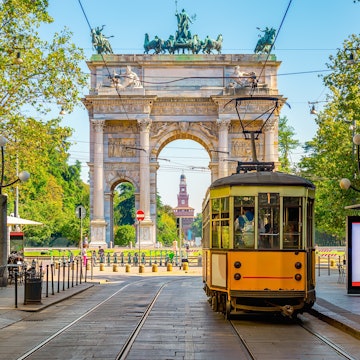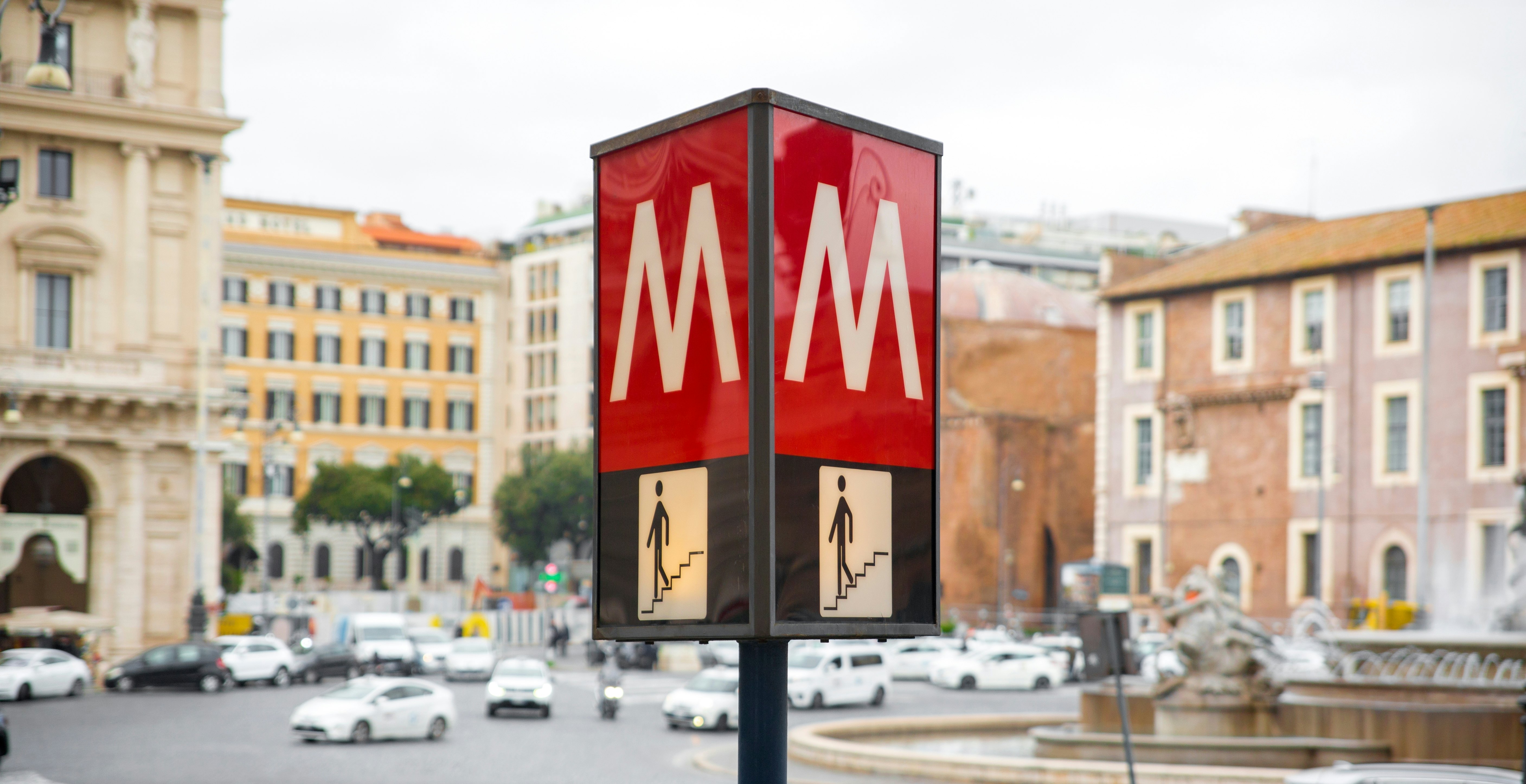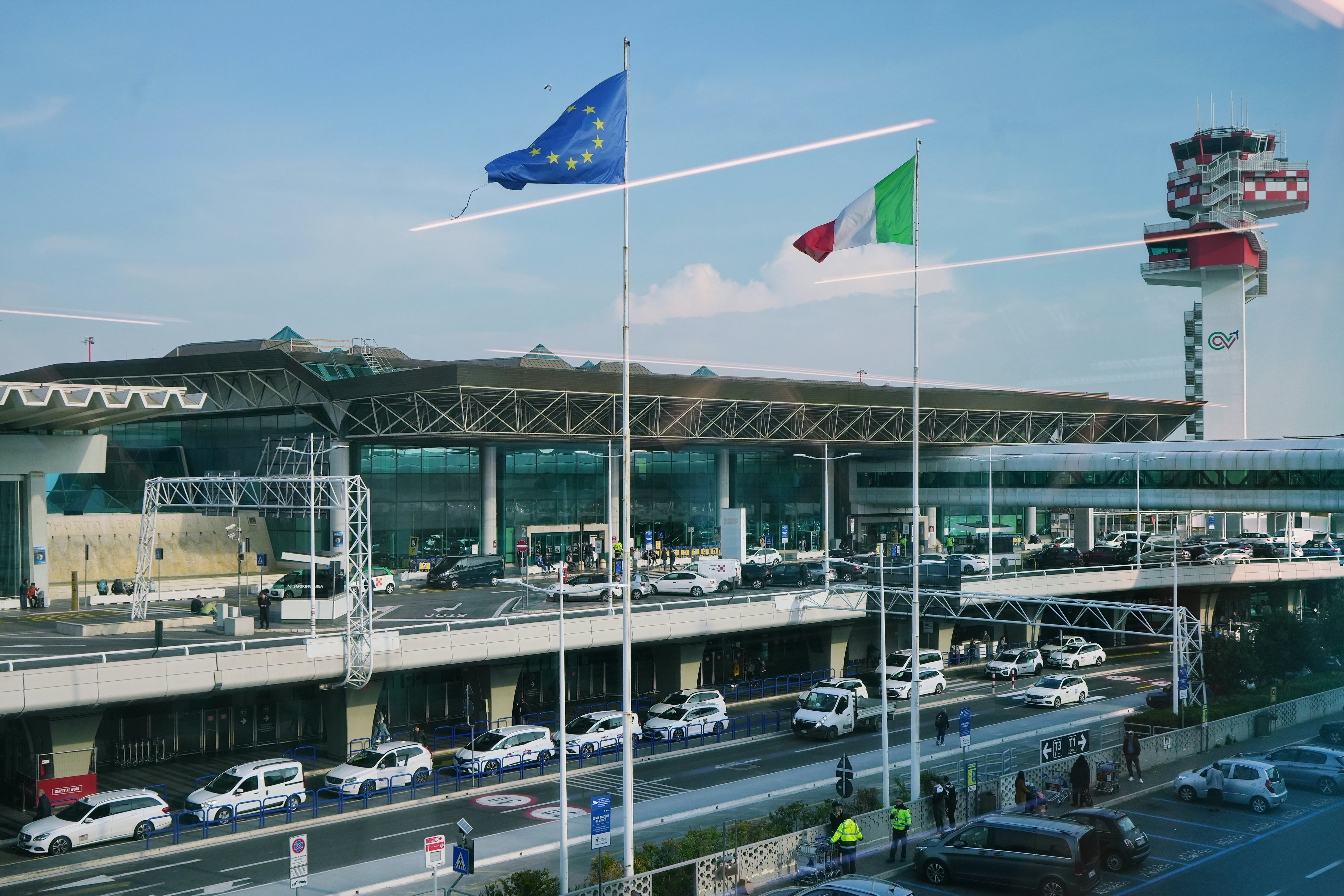
Dec 16, 202414 min read
Getting around Italy: from car rentals to trams and buying train tickets at the cheapest prices
A bus passes Rome's Vittoriano. moomusician/Getty Images
All roads lead to Rome, goes the saying, because in antiquity, all main roads in Europe (and beyond) were built to connect Rome with its vast empire. Most of those roads to and within the Eternal City still exist two thousand years later, so it stands to reason that Rome has inherited some less-than-ideal infrastructure for the modern age. One thing is certain: traffic is as much a problem nowadays as it was in the time of Julius Caesar, who had to institute the first no-traffic zone.
No doubt, there's a knack to navigating this incredible city – here's what you need to know.

The best way to move around the city center is to do so on foot, if possible. With enough time to spare, you can walk from one sight to the other and discover many more places of interest on your stroll. If walking everywhere isn’t an option for you, or if you need to go farther than the center, public transportation is your best bet.
Roman buses used to be the subject of many memes, but in the past couple of years, the local administration has invested a lot to strengthen ATAC, the public transport company, and its fleet. You can now safely choose between more than 250 lines, most of which employ brand-new electric buses, and get to your destination with little hassle.
Bus stops are easy to spot; the city administration has just added new structures for this year's Vatican Jubilee. They are transparent, with the bus stop name written clearly in the front, a white bench to sit on, a dedicated wheelchair space and an interactive digital platform. The latter is your safest bet for understanding how far away the bus you need may be and how much it will take to get there. Other apps like Moovit and Google Maps offer to do the trick, but the official ATAC information on the bus stop screens are the most accurate. You can also consult the official website.
Upon seeing pedestrians at the designated bus stop, the driver should automatically stop, but it certainly doesn’t hurt to wave your hand. Once you’re on the bus, don’t forget to validate your ticket, and press the red button when your destination is approaching to make sure the bus stops to let you hop off.

A popular route in the city center is the H bus, which goes from Termini Station all the way to Via dei Capasso in Monteverde, passing by the center, Piazza Venezia, Teatro Marcello, and Trastevere. In the opposite direction, it stops at Largo di Torre Argentina instead of Teatro Marcello. The 8 tram covers largely the same route but stops at Piazza Venezia and doesn’t continue to Termini, while the 3 tram departs from Stazione Trastevere and crosses the city all the way north to Valle Giulia, passing by Ostiense, Aventino, Circus Maximus, the Colosseum, San Giovanni in Laterano, San Lorenzo, the Palazzo delle Belle Arti and the Museum of Villa Giulia. Tram stops are located on the tram lanes and may be less visible than bus stops, but they can be recognized by a tall sign indicating the name of the stop, what tram/s run by, and their routes.
A regular bus/tram ticket costs €1.50 (US$1.70) and lasts for 100 minutes. Pay directly on board via credit card and you can hop on and off whichever city line you want. All the new buses have USB charging points and digital screens alerting passengers of the bus’s next stop. Trams can seat more people and generally are untouched by traffic, given that they travel on their own tracks.
Planning tip: Generally, public transportation is reliable and safe in Rome. Timetables are mostly respected, but buses can often be a few minutes late during peak hours or in case of rain. It's worth building in a little extra time if you have to make an appointment. If you only need to catch a bus for a stop or two, walking is usually a better option.
Rome has more than 40 train stations that are all connected. Consider using regional trains to move from one corner of the city to another; it’s faster and costs even less at just €1 (US$1.15).

Rome has three metro lines, simply called A, B and C, distinguished by their respective orange, blue and green colors, for a total of 73 working stations, and two more under construction. Line A crosses Line B at Termini Station and Line C at San Giovanni. Some metro stations, like San Giovanni Metro C, are basically an underground museum, showcasing archaeological findings from prehistoric ages until the 3rd century CE.
Metro tickets are the same as bus/tram tickets and cost €1.50 (US$1.70), but you can’t use the same ticket on different modes of transport like you can overground; here you can continue using your ticket for 100 minutes as long as you never leave the metro.
Planning tip: Make sure to plan ahead of your metro journey, as there is no cell phone service in many underground stations.
One ticket for the bus/tram/metro costs €1.50 (US$1.70) and lasts 100 minutes. Physical tickets must be validated on board – you could be fined for not doing so. If you do not have a physical ticket, you can use the Tap & Go service on board with your credit card or smartphone. Children under 10 travel for free when accompanied by a paying adult.
If you plan on using public transport a lot during your stay (whether metro, bus, or trams, or a combination of them), consider investing in a daily pass for €7 (US$7.95), a 48-hour pass for €12.50 (US$14.15), a 72-hour pass for €18 (US$20.40), or a 7-day pass for €24 (US$27). You can purchase your pass online or in person in the main metro stations or train stations.
The thought of renting a car may be tempting if you are used to driving everywhere, but resist the urge. Rome has multiple no-traffic and limited-traffic zones that often confuse even locals and lead to enormous fines. Not to mention the elephant in the room: parking. A nightmare for Romans, the art of finding parking here is only slightly less violent than participating in an ancient gladiator fight in the Colosseum.
There have been many collisions between push scooters and cars in Rome over the past few years. They are definitely not the safest way to move around Rome. Large parts of the city do not yet have a dedicated bike lane and the cobblestones all around the center are not the ideal pavement for push scooters. Considering that drivers can be rather unpredictable, the combination of all these factors often leads to dangerous situations for people on push scooters or e-scooters. Cycling is slightly safer as a bike offers more stability and you’re less likely to lose balance and fall.

Only climb into an official taxi recognized by Roma Capitale. All cabs are white, display “TAXI” on top, and their taxi license number on the side (which is different from the car’s license plate). The minimum fare starts at €9 (US$10.20) no matter how short your ride is. Make sure the driver turns on the meter to avoid any surprises. Some drivers may ask you to pay in cash, but all official taxis are required to provide a credit card payment option and it is your right to pay by card, if you so wish.
Rides to the airports are fixed fares from the city center (specifically, within the Aurelian walls). To Ciampino Airport it is €40 (US$45); to Fiumicino Airport, it costs €55 (US$62). You should not be charged for luggage on top of the fixed rate.
Fake taxis do exist – you may see them outside the main train stations (Termini and Tiburtina) trying to help you skip the line. Remember that you can’t really hail taxis in Italy; you either wait by an official taxi stand or call (+39) 06 06 09 or (+39) 06 35 70. You can also use the IT Taxi app or the FreeNow app. Uber is legal in Italy, although not as popular as cabs; you can reserve one through the Uber app at any time.
Rome may not be the most accessible of cities, mainly due to its buildings being (literally) ancient, but the administration is making an effort to provide accessible transportation options. All metro stations are equipped with an elevator allowing people to get to the train level, and all city buses have a wheelchair platform available and wheelchair-designated spaces on board.